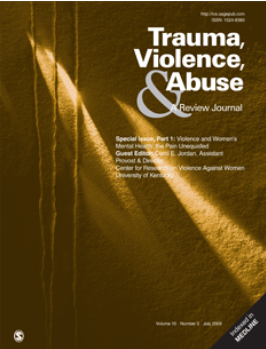A Meta-Analytic Review of the Relationship Between Alcohol and Bystander Intervention for Sexual Assault
IF 5.4
1区 社会学
Q1 CRIMINOLOGY & PENOLOGY
引用次数: 0
Abstract
Sexual assault (SA) remains a significant public health issue, and there is growing interest in SA prevention approaches. Bystander intervention (BI) programs aimed at increasing individuals’ willingness to intervene when they witness problematic situations show promise. However, social contexts that are high-risk for SA often involve alcohol, which may impact bystanders’ abilities to intervene. Indeed, theoretical and empirical work has suggested that alcohol may impact BI. However, research has yet to quantitatively and systematically review extant literature to quantify whether and how much alcohol might impair BI. The current meta-analysis estimated associations between bystander alcohol use and BI in real, imagined, or hypothetical SA scenarios within both experimental and correlational/naturalistic studies, disaggregating the latter into BI behaviors, intentions, and attitudes. Database searches and author requests yielded 27 eligible articles (酒精与性侵犯旁观者干预关系的元分析综述
性侵犯(SA)仍然是一个重要的公共卫生问题,有越来越多的兴趣在SA预防方法。旁观者干预(BI)项目旨在增加个体在看到有希望的问题情境时进行干预的意愿。然而,对于SA来说,高风险的社会环境通常涉及酒精,这可能会影响旁观者的干预能力。事实上,理论和实证研究都表明,酒精可能会影响BI。然而,研究尚未定量和系统地回顾现有文献,以量化酒精是否和多少可能损害BI。当前的荟萃分析估计了在实验研究和相关/自然主义研究中,在真实、想象或假设的情景下,旁观者酒精使用与BI之间的关联,并将后者分解为BI行为、意图和态度。数据库检索和作者请求得到27篇符合meta分析条件的文章(n = 11,139)。结果表明,自然的酒精使用(即在日常生活中发生的酒精使用)可能仅与旁观者意图负相关(k = 15, r = -)。08, p <;措施)。实验中使用的酒精也可能与BI呈负相关(k = 5, g = - 0.16, p = .002),但这种关联不太明显,而且似乎与态度有关。适度分析表明,这种模式可能会随着大学地位而变化,而不是性别。具有离群效应大小的样本和相对较少数量的实验研究表明需要在这一领域进行更多的研究。因此,这些发现为该领域的下一步研究提供了信息,并为改进以旁观者为基础的干预措施,以最有效地降低SA风险提供了信息。
本文章由计算机程序翻译,如有差异,请以英文原文为准。
求助全文
约1分钟内获得全文
求助全文
来源期刊

Trauma Violence & Abuse
Multiple-
CiteScore
13.60
自引率
7.80%
发文量
131
期刊介绍:
Trauma, Violence, & Abuse is devoted to organizing, synthesizing, and expanding knowledge on all force of trauma, abuse, and violence. This peer-reviewed journal is practitioner oriented and will publish only reviews of research, conceptual or theoretical articles, and law review articles. Trauma, Violence, & Abuse is dedicated to professionals and advanced students in clinical training who work with any form of trauma, abuse, and violence. It is intended to compile knowledge that clearly affects practice, policy, and research.
 求助内容:
求助内容: 应助结果提醒方式:
应助结果提醒方式:


